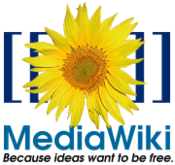I was thinking today about the various pieces that help to make the Gustavus website as strong as it is and was taken aback at the number of free-to-use components we employ. I’d like to take this opportunity to show a little love for the wonderful, free things that many people have worked so hard on and many web developers are benefiting from.
In the Front Lines
Programs

Perhaps this is jumping the gun a little bit because we are not currently using it in full force, we have plans to using the open-source MediaWiki in a project that has not launched yet. MediaWiki is the same software that many popular Wikis such as Wikipedia run.
A wiki is a website that is freely editable by anyone who as access to the Internet and a web browser. Wikis streamline collaborative content creation and promote community envolvement. Ultimately, a wiki can become a great resource is it has a strong enough community.
Additionally, all of our blogs use WordPress, the popular, open-source blogging software.
Javascript
A few Javascript libraries have been receiving some recognition and are leading the revolution of the web. I am proud to say that some of these Javascript libraries provide us with some of the more interesting functionality.
Moo.fx is an effects library that allows us to create beautifully tweened animations that ultimately improve the usability of the website. Most notably, we use the smooth text-resizer capability on the upper-right portion of every page and scrolly links on any inline link. Additionally, the accordion effect is employed on the news page and some other concepts that have yet to be announced.
“Prototype is a JavaScript framework that aims to ease development of dynamic web applications.” And, it most definitely does. However, because we do not need all of the robust features that the full 46K version offers, we use Prototype lite that comes bundled with Moo.fx.
Ben Nolan’s Behaviour allows us to implement Javascript in a new way–using CSS selectors. This keeps the javascript code on our pages ultra-minimal and helps us separate dynamic functionality from the layout and content of our website. For me, Behaviour is really a needed breath of fresh air and makes implementing and maintaining Javascript a lot more enjoyable. We use Behaviour for nearly all of our Javascript.
Lokesh Dhakar produced a very slick piece of Javascript called Lightbox JS, “a simple, unobtrusive script used to overlay images on the current page.” Lightbox is primarily used for the images in our news stories and online directory.
Icons
I don’t speak French, so when I drove across Quebec I really realized the importance of quality, straightforward icons that are associated with a message. While it can be tough to convey a universal message in such a small space, there are some real gems on the Internet.
Mark James at FamFamFam loves to create classy pixel icons and we love them. You can see his handiwork in our feedback and send this page buttons at the top of each page and in our five-star rater at the bottom of each page.
![]()
Since the same standard RSS icon has been implemented in Firefox and will be in Internet Explorer 7, we have been switching our RSS icons over to match. FeedIcons has been a vital resource for this effort.
Behind the Curtain
Finally, on the server side of things, we are running some impressive and powerful free software:
- PHP is a server-side HTML preprocessing language that enables us to deliver dynamic content, like this blog, the college calendar or the campus directory.
- MySQL is an open source database engine that stores much of the dynamic content that we deliver to you.
- Apache is an open source web server that delivers the static and dynamic content on our website.
